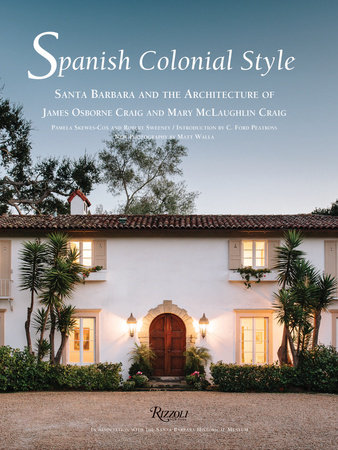Spanish Colonial Style: Santa Barbara and the Architecture of James Osborne Craig and Mary McLaughlin Craig
Author Pamela Skewes-Cox and Robert Sweeney, Introduction by C. Ford Peatross, Photographs by Matt Walla
- Publish Date: October 13, 2015
- Format: Hardcover
- Category: Architecture - Buildings - Residential
- Publisher: Rizzoli
- Trim Size: 9 x 12
- Pages: 272
- US Price: $60.00
- CDN Price: $80.00
- ISBN: 978-0-8478-4612-2
Reviews
-ARCHITECTURAL DIGEST

